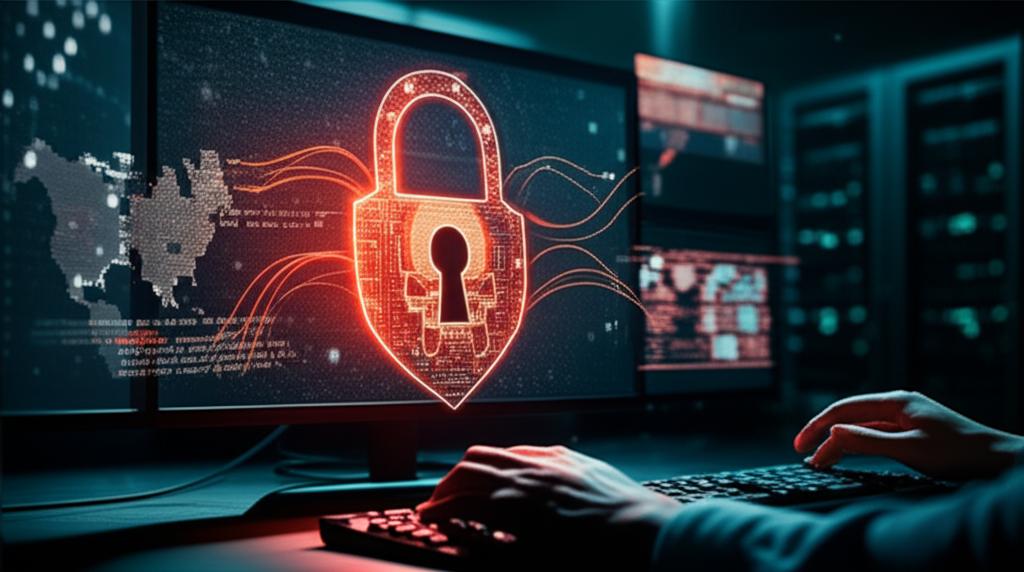Unleashing Chaos: The Devastating WannaCry Ransomware Attack
In May 2017, the world witnessed one of the most widespread and disruptive cyberattacks in history: the WannaCry Ransomware Attack. This malevolent piece of malware spread like wildfire across the globe, locking down critical systems and demanding ransom payments in Bitcoin. Its rapid propagation and devastating impact served as a stark reminder of the ever-present dangers in the digital landscape.
What Was WannaCry and How Did It Spread?
WannaCry is a type of ransomware that encrypts files on a computer and demands a ransom, typically in cryptocurrency, for their decryption. What made WannaCry particularly potent was its ability to self-propagate across networks, behaving more like a worm than traditional ransomware.
The core of its infectious capability lay in an exploit known as “EternalBlue.” This vulnerability, originally developed by the U.S. National Security Agency (NSA) and later leaked by a hacking group called “The Shadow Brokers,” targeted a flaw in Microsoft’s Server Message Block (SMB) protocol. Despite Microsoft releasing a patch (MS17-010) prior to the attack, many organizations had not applied it, leaving them highly susceptible. Once a system was infected, WannaCry would encrypt its files, display a ransom note, and then attempt to spread to other unpatched computers on the same network and across the internet.
The Devastating Global Impact
The reach of the WannaCry attack was truly global, affecting over 200,000 computers in 150 countries within days. Its victims ranged from individuals to large corporations and essential public services. Some of the most notable casualties included:
- National Health Service (NHS) in the UK: Hospitals and GP surgeries were forced to cancel appointments and operations, diverting ambulances and causing significant disruption to patient care.
- Telefónica in Spain: The telecommunications giant experienced widespread system outages.
- FedEx: The international shipping company reported significant operational disruptions.
- Germany’s Deutsche Bahn: Display screens at railway stations showed ransom notes instead of train schedules.
The financial cost of the WannaCry incident was estimated to be in the hundreds of millions, if not billions, of dollars, encompassing direct ransom payments (though few were paid, and even fewer led to data recovery), cleanup costs, and lost productivity.
The “Kill Switch” and Mitigation Efforts
Remarkably, a critical flaw in WannaCry’s design emerged. A British cybersecurity researcher, Marcus Hutchins (MalwareTech), discovered that the malware was programmed to check an unregistered domain name. By registering this domain, he inadvertently activated a “kill switch” that significantly slowed the attack’s spread, effectively stemming the tide of the initial wave. While this didn’t decrypt already infected systems, it prevented countless more from succumbing.
Governments and cybersecurity firms worldwide scrambled to issue warnings, provide patches, and offer guidance on mitigating the threat. The incident underscored the vital importance of:
- Promptly applying security updates.
- Implementing robust firewall rules.
- Educating users about phishing and suspicious attachments.
- Maintaining regular data backups.
- Developing comprehensive incident response plans.
Lessons Learned and the Lingering Threat
The WannaCry Ransomware Attack served as a wake-up call for organizations globally, highlighting severe vulnerabilities in their cybersecurity postures. It demonstrated the catastrophic potential of unpatched systems and the interconnectedness of global digital infrastructure.
“The WannaCry attack was a stark reminder that cybersecurity isn’t just an IT department’s concern; it’s a critical business risk that requires top-level attention and investment.”
Even years later, variants and new ransomware attacks continue to pose significant threats. The legacy of WannaCry persists in heightened awareness and increased investment in cybersecurity measures, but the digital arms race continues. Staying vigilant, proactive, and resilient remains paramount in confronting such sophisticated threats.







